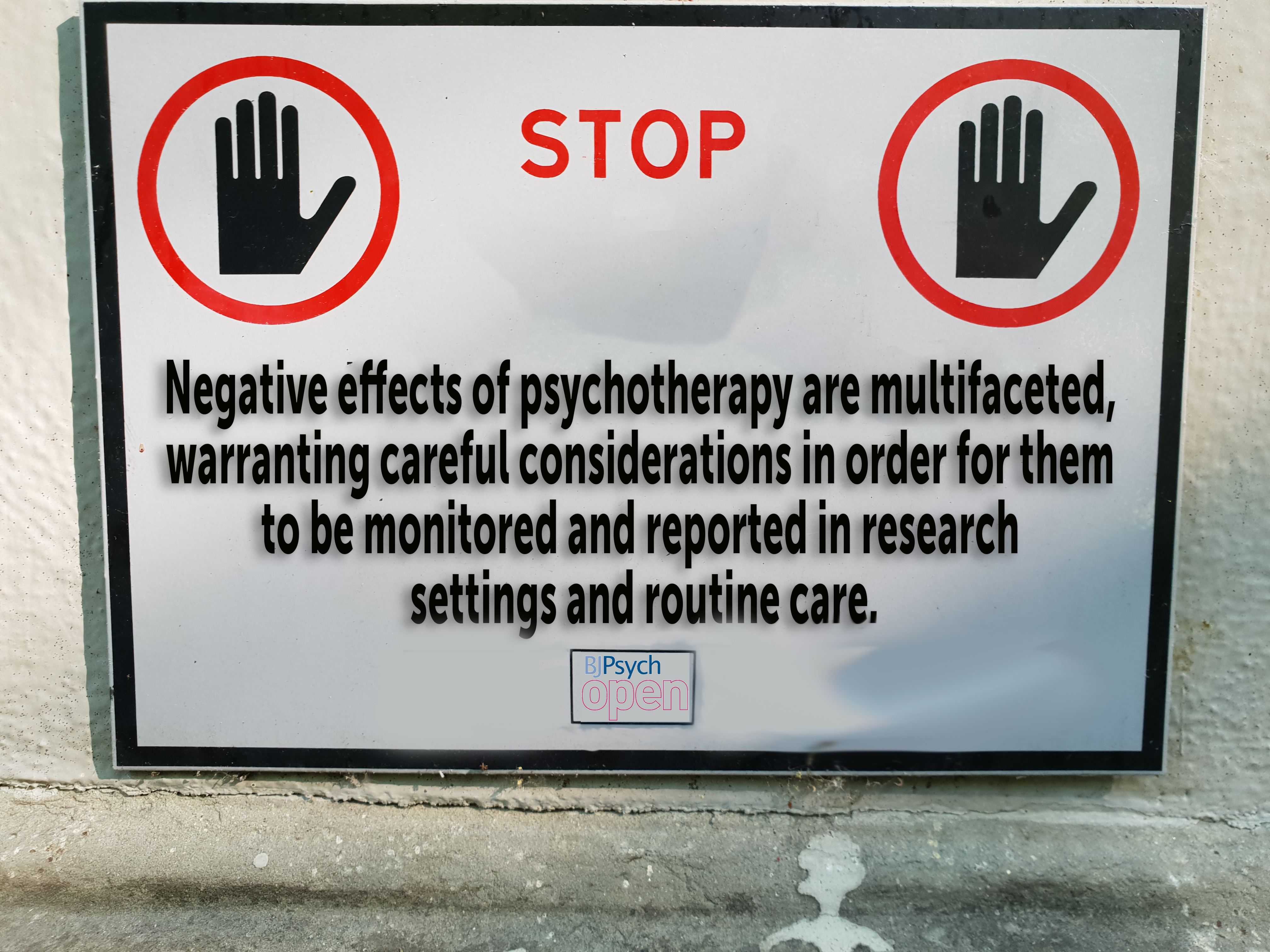In a new paper, just published in the open access version of British Journal of Psychiatry, we present a commentary on the current understanding and give future research directions of negative effects in psychotherapy. Including what to do in clinical practice. The authors, are quite an impressive group of people (if I may say so myself): Alexander Rozental, Louis Castonguay, Sona Dimidjian, Michael Lambert, Roz Shafran, Gerhard Andersson and me (Per Carlbring).
We know that psychotherapy can alleviate mental distress and improve quality of life, but little is known about its potential negative effects and how to determine their frequency.
An anonymous survey was distributed to a select group of researchers, using an analytical framework known as strengths, weaknesses, opportunities and threats.
The researchers perceive an increased awareness of negative effects in psychotherapy in recent years, but also discuss some of the unresolved issues in relation to their definition, assessment and reporting. Qualitative methods and naturalistic designs are regarded as important to pursue, although a number of obstacles to using such methods are identified.
Read the full paper:
Rozental, A., Castonguay, L., Dimidjian, S., Lambert, M., Shafran, R., Andersson, G., & Carlbring, P. (2018). Negative effects in psychotherapy: Commentary and recommendations for future research and clinical practice. BJPsych Open, 4(4), 307-312. doi:10.1192/bjo.2018.42
[lightbox link=”http://www.carlbring.se/wp/wp-content/uploads/2018/07/STOP-BJP.jpg” thumb=”http://www.carlbring.se/wp/wp-content/uploads/2018/07/STOP-BJP-1024×768.jpg” width=”1024″ align=”center” title=”” frame=”true” icon=”image” caption=””]
